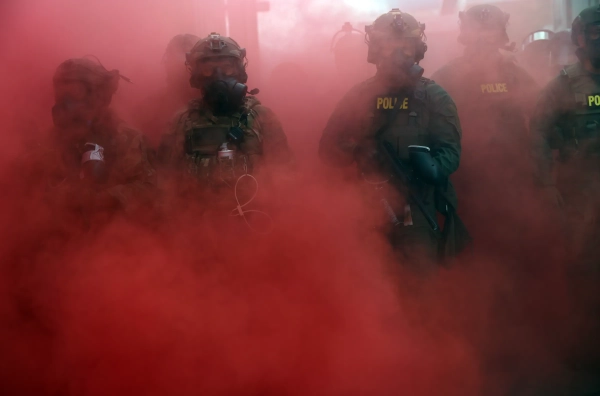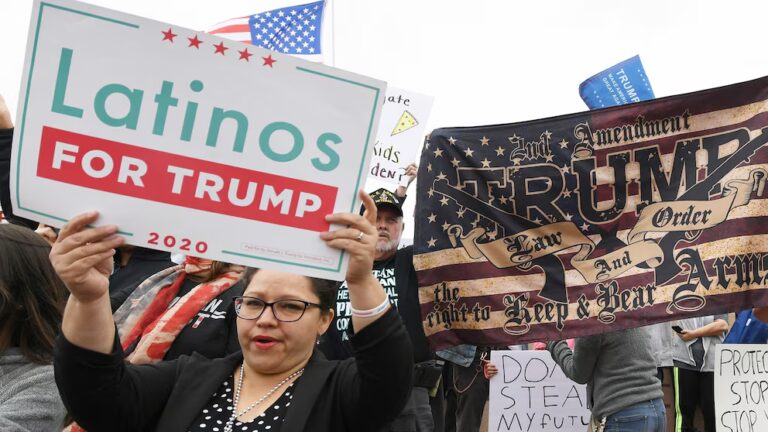
Political brutality isn’t unprecedented in America. Nevertheless, the response to it currently feels unlike anything before.
Following the slaying of Charlie Kirk, the nation didn’t coalesce around a message of moderation. Alternatively, prominent figures regarded it as fuel. This transformation, paired with an increase in retaliatory aggressions and a politicized security framework, indicates a more perilous era in our politics.
Barbara Walter serves as a political scholar at the University of California San Diego and penned How Civil Wars Start. She scrutinizes how democracies devolve into disequilibrium — and how they recuperate. I brought Walter onto The Gray Area to deliberate on what renders this juncture unique, the reasons behind escalating lone-actor savagery, the means by which leaders’ pronouncements can legitimize coercion, and the precise measures required to alleviate the intensity.
As is customary, the complete podcast provides significantly more content, so tune in and track The Gray Area on Apple Podcasts, Spotify, Pandora, or any platform where you access podcasts. New installments are launched each Monday.
This discussion has undergone editing for conciseness and clarity.
Throughout this country’s past, we’ve witnessed a substantial amount of political aggression, and there have undeniably been more tumultuous periods than the present one. However, you’ve expressed that this instant still evokes a distinct sensation — and a more hazardous one — compared to previous waves of brutality. What’s the rationale?
There exist three major disparities. The initial one is how our chiefs are acting in response. Conventionally, when calamity befell — be it an assassination, a terrorist event, or a local detonation — the inclination among political heads was to unify the populace. This holds particular significance in a location as varied and diverse as the United States. Following occurrences such as 9/11, the Oklahoma City explosion, and political executions in the 1960s, Democrats and Republicans stood in solidarity, denouncing the violence and reassuring individuals that we were a united nation.
On this occasion, that did not transpire. Barely hours after Charlie Kirk’s passing, influential figures on the right employed it as a political weapon. Rather than appeals for tranquility or moderation, it evolved into a war cry. Figures such as Laura Loomer and Steve Bannon promptly resorted to “civil war” rhetoric. Even the president alluded to “pursuing them,” despite the subsequent revelation that this was the action of a solitary individual — a young man subjected to online radicalization. The prompt reaction was not unity, but revenge. This marks a departure and signifies peril.
You possess a valuable term — “violence entrepreneurs” — to characterize those who exploit chaotic or unpredictable occurrences, transforming them into instruments for political advantage.
That is precisely what we are observing. An individual act of aggression morphs into propaganda. In lieu of perceiving these as discrete transgressions, political participants incorporate them into a wider tale of existential menace: “They aim to eliminate us.” This sort of parlance incites extremism more rapidly than any ideology.
Related
- Numerous communities have encountered crises akin to our own. An expert elucidates their methods of resolution.
You’ve also documented that ferocity is no longer confined to a single perspective, and this alteration amplifies the instability of the situation. Could you elaborate on the dynamics that arise upon being ensnared in a downward trajectory of this nature?
It unquestionably heightens the state of volatility. Political brutality in the US has historically stemmed chiefly from the far right. At present, we are witnessing the emergence of incidents from the contrasting extremity of the spectrum. While they remain fewer in number, their escalation is both palpable and considerable.
A contemporary study conducted by Dan Byman at Georgetown determined that assaults connected to far-left motivations have attained their zenith in three decades. This should not be interpreted as an assertion of equivalence. The far right sustains its status as being substantially more lethal; however, the underlying dynamics are undeniably evolving. When aggression ceases to be unidirectional, it transitions into a self-perpetuating phenomenon. Each faction references the other as evidence substantiating an impending menace.
During the 1990s, in the aftermath of the Oklahoma City bombing, the FBI successfully pinpointed and infiltrated militant groups, prosecuted figureheads, and drastically diminished membership. Such an intervention was achievable due to the threat’s concentrated origin. When confronted with reciprocal violence — right and left, with each faction citing the other’s attacks to legitimize their own conduct — the underpinning logic becomes self-reinforcing.
Could you expound on the “self-reinforcing” rationale? Is it that aggression is no longer perceived as a discretionary action but rather as a measure of protection or self-survival?
Precisely. And this shift — transitioning from ideological aggression to protective aggression — marks the point at which democracies descend into instability. Every nation harbors a fringe element that aspires to revolutionize. The predominant desire among individuals is for safety. Nonetheless, if you manage to persuade a sufficient cohort of citizens that their welfare and survival are under attack, they will condone practically any measure. They will equip themselves. They will disregard the victimization of adversaries.
Your third cause for apprehension pertains to the condition of legal enforcement — suggesting that our establishments are not what they formerly were. What exactly do you imply?
“And here lies the crux: Uncoordinated violence remains politically advantageous. Self-serving chiefs can project any narrative they desire onto it.”
I’m referencing the leadership. The FBI, Homeland Security, including the Defense Department — these entities are critical safeguards of internal equilibrium. Throughout much of contemporary history, they have been guided by seasoned professionals possessing extensive expertise, individuals entrusted to operate impartially. However, this is no longer the prevailing circumstance.
Presently, we encounter leaders who are primarily political appointees, with expertise assuming a secondary role. We are alluding to individuals characterized by restricted proficiency and pronounced partisan affiliations. Envision if someone resembling Kash Patel had occupied the position of FBI director subsequent to the Oklahoma City incident. He would have lacked the requisite knowledge to dismantle militant factions, and he might have been instructed to abstain from doing so. When those in positions of authority do not subscribe to the mission or comprehend its essence, even the most proficient agents operating beneath them are incapacitated.
Thus, the underlying peril does not reside primarily within the general membership but rather within the politicization pervading the upper echelons.
Precisely. You may have luminous, committed public servants dispersed throughout these agencies, but in the event that leadership exhibits partisan allegiance and timidity, they will refrain from acting upon the intelligence at their disposal.
You are a scholar of civil conflicts. If one were to conceive of a continuum whose extremes encompass absolute social tranquility and harmony on one end and the dystopian landscape of Mad Max: Fury Road on the opposing pole, where would the United States be positioned currently?
I would assert that we currently inhabit a zone of heightened peril. This does not necessarily entail military units confronting one another on the battlefield — contemporary civil wars infrequently manifest in such conventional forms. They are more closely allied with insurgency or sustained domestic terrorism: characterized by sporadic assaults, directed assassinations, and the undermining of safety in daily life. Consider Israel’s protracted struggle with Hamas. It is not a conventional armed conflict but a persistent, low-grade menace that renders normal existence precarious.
Americans exhibit a propensity to regard events such as those in Buffalo, El Paso, or Pittsburgh as isolated tragedies. However, when viewed collectively, they constitute a discernible pattern: a consistent undercurrent of ideologically fueled aggression that has attained a state of normalization. The fundamental hazard resides therein — when a society relinquishes the perception of ferocity as an atypical occurrence.
What are the foundational circumstances that engender this “heightened-risk” milieu?
I would concentrate on three salient aspects. The foremost concerns a fragile democracy. The most extensive manifestations of political violence transpire not within dictatorships or robust democracies but rather in partial democracies — regimes that exhibit characteristics that are neither wholly transparent nor entirely constrained. This is the status quo for the US presently.
The second condition consists of identity-centric political parties. When parties are structured around elements of race, creed, or ethnicity, the nature of competition intensifies into an existential contest. The Republican Party remains approximately 80 percent white within a multiethnic nation; thus, it is classified as an identity-based party by definition.
The third pre-condition pertains to a sense of diminishing status. The faction that formerly commanded dominance and perceives its erosion — across the domains of politics, culture, and demographics — stands as the most susceptible to embracing aggression.
To what degree has societal acceptance of political violence shifted? What conclusions may be drawn from the available data?
Surveys convey its amplification. In response to queries regarding the justifiability of aggression “under selected conditions,” a greater proportion of Americans presently respond affirmatively. In select polling, up to four out of ten individuals contend that brutality may be validated in scenarios of self-preservation. Historically, this statistic hovered near zero. It exhibits an upward trajectory across the spectrum, although it remains predominantly elevated on the right.
The transition from “near zero” to a ratio of four out of ten is…cause for alarm.
It undeniably is. The models employed by political scientists assess the annual likelihood of substantial instability at roughly 4 percent for nations mirroring our own — characterized by partial democracy and identity-based divisions. An incidence rate of four percent may appear negligible; nonetheless, in the absence of ameliorative interventions, it undergoes a process of compounding. After a decade, the situation progresses to the domain of a coin-flip outcome. After two decades, the condition approaches near certainty. The central inquiry centers on whether the foundational conditions improve or worsen.
What about from the pinnacle downward? Earlier, we examined the reactions of leaders in response to acts of aggression; however, a protracted history exists wherein leaders manufacture instances of violence as a means of consolidating their authority.
That represents yet another dimension of increasing apprehension on my part, a phenomenon I have not yet chronicled but which merits American awareness. The genesis of the majority of civil conflicts transpires at the grassroots level, instigated by factions or militant organizations. Nevertheless, wars are similarly initiated by leaders. In these particular instances, warfare is deliberately contrived with the objective of preserving a ruler’s tenure, thereby definitively precluding the possibility of democracy.
Consider Putin’s trajectory. Subsequent to his initial democratic election during the 1990s, he solidified his authority by initiating hostilities in Chechnya, followed by Syria, then Crimea, and most recently, Ukraine. Every successive confrontation ignited patriotic fervor, fostered a rally-around-the-flag response, and empowered him to proclaim emergency governance — thereby suspending customary democratic constraints for the duration of the hostilities.
When I experience nighttime awakenings and harbor worries concerning America, my contemplations converge on this: prior to the 2028 election, during which he is slated to be term-limited out, Donald Trump could fabricate a form of emergency — one entailing organized violence — and exploit it as a pretext to remain ensconced in the White House.
Related
- Donald Trump epitomizes a globalist.
The singularly influential variable currently in play, which lacked a precedent in earlier epochs, pertains to the internet and social media — entities that you have portrayed as “accelerants.” How does this component integrate into the broader framework?
Envision the same demagogue operating in the absence of social media. We were nurtured in that environment — characterized by three television networks, editors who exercised discretion over aired content, and communal foundations of factual information. In contemporary society, leaders no longer require the aegis of conventional gatekeepers. They possess the capacity to communicate directly with millions, amplify fragmentation, normalize brutality, and target adversaries in real time.
This technological infrastructure segregates individuals within echo chambers, inundates them with indignation, and instills a perpetual sense of impending threat. Such a phenomenon transcends the classification of a mere communication dilemma; it represents a structural vulnerability and functions as a force multiplier that exacerbates polarization and radicalization.
In previous periods, a significant proportion of America’s political violence manifested in a more structured manner. The Weather Underground, the Klan, militant factions, and even the Oklahoma City incident — all were underpinned by lucid ideological agendas. In contrast, numerous recent assaults exhibit a semblance of post-ideological characteristics — less coherent movements than the actions of erratic individuals. Does this phenomenon necessitate a revision in our interpretative framework?
Presently, the prevailing ideology frequently manifests incoherence; nonetheless, this characteristic does not render it innocuous. The majority of these attackers are profoundly immersed in online culture — encompassing memes, irony, and trolling. While it may project an aura of frivolity, it functions as a portal to radicalization. The amalgamation of “jokes,” conspiracy theories, and alienation engenders its distinct belief paradigm.
And herein lies the pivotal observation: incoherent violence remains politically instrumental. Opportunistic chiefs retain the prerogative to overlay it with any desired narrative. Irrespective of the killer’s motives — whether they be rooted in fascism, leftist ideology, or nihilism — it will invariably be spun as substantiating the depravity of the opposing faction and serving as a justification for retribution or authoritarian crackdowns.
Ergo, the central hazard transcends the brute reality of violence itself; it also encompasses the manner in which it is interpreted.
In instances where the underlying motivation evades unambiguous articulation, narrative assumes the role of filling the void. And with the preponderance of the most vociferous megaphones residing in the possession of entities who are eager to exploit chaos, the resultant narrative almost invariably precipitates the escalation of trepidation.
Are you taken aback by the relative infrequency of political brutality in comparison to the potential that exists? Considering the advanced state of polarization, the extensive ownership of firearms, and the degree to which we have psychologically destabilized ourselves online?
Not entirely. Americans, as a demographic, manifest remarkable kindness and generosity. Should you traverse the expanse of this nation — inclusive of its most staunchly conservative or liberally inclined enclaves — the overwhelming majority of individuals exhibit a cordial disposition. The disheartening aspect resides in the paradoxical coexistence of such rudimentary decency with the endemic prevalence of political dysfunction and widespread firearm saturation.
Other advanced democracies do not subsist in this fashion. Our existing gun regulations amplify the lethal impact of every outburst. If we were to implement the straightforward measure of precluding firearms from falling into the possession of individuals with a documented history of domestic violence or those afflicted by untreated mental health conditions, the aggregate of tragic episodes would undergo a precipitous reduction. This transcends partisan considerations; it represents a fundamental harm mitigation strategy.
Hence, resolutions must originate from the grassroots level?
I posit that such is the case. Congress has forfeited a substantial proportion of its supervisory mandate to the presidency. Neither major party has ushered in meaningful democratic reforms. Genuine transformation will emerge from civic engagement: including the mobilization of substantial voter turnout, the organization of expansive nonviolent demonstrations, and the exertion of localized pressure in favor of equitable elections.
Were 75 or 80 percent of eligible Americans to participate in the electoral process, even during midterm elections, the compositional structure of Congress would undergo a thorough transformation. Historical precedents demonstrate that when a mere 3 or 4 percent of a given population engages in sustained, nonviolent protest, regimes undergo alterations. The underlying mathematical principles favor the populace — conditional upon their active utilization thereof.
Certain individuals will interpret this as an overreaction, contending that unfortunate incidents are inevitable, that they have persisted throughout history, that conditions have been significantly more dire in the past, and that the system invariably self-corrects.
I wish that such were the incontestable truth. Nonetheless, democracies infrequently implode precipitously. The more typical scenario involves a gradual erosion — which Hungarians denote as “death by a thousand cuts.” Every transgression of a normative standard initially presents as minor, excusable, or even justifiable. However, in due course, these accumulated incremental infractions aggregate to a critical threshold. By the juncture at which citizens apprehend the magnitude of the losses sustained, the capacity to reverse the trend has been irretrievably forfeited.
Such was the strategy employed by Viktor Orbán in Hungary. He acceded to power through democratic processes, then systematically proceeded to rewrite the regulatory framework: revising electoral laws, co-opting the judicial system, and suppressing dissenting voices within the press. Each individual measure remained survivable in isolation; however, the collective impact culminated in the demise of democracy.
Therefore, what engenders within you a sense of optimism?
The American citizenry. I do not subscribe to the notion that the majority of Americans will passively acquiesce to authoritarianism. They are accustomed to freedom. They hold it in profound esteem, irrespective of their divergent perspectives on other facets of life. If they attain a full appreciation of the stakes involved, they will spring to action. That constitutes my underlying hope.
Listen to the remainder of the dialogue and ensure you follow The Gray Area on Apple Podcasts, Spotify, Pandora, or your preferred podcast platform.
Source: vox.com






